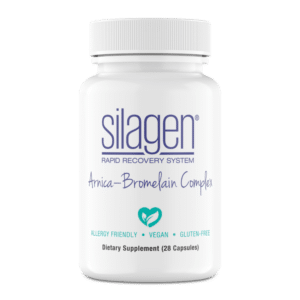Managing Swelling After a Facelift: Expert Strategies
Swelling is a common and expected part of the recovery process after a facelift. While it can be uncomfortable and may affect the initial appearance of your results, there are several effective strategies you can use to manage and minimize swelling. In this blog, we’ll explore expert-recommended techniques for reducing swelling after a facelift, helping you achieve a smoother and quicker recovery.
Why Does Swelling Occur After a Facelift?
Swelling after a facelift occurs due to the body’s natural healing response to surgery. The manipulation of tissues and the incision of the skin trigger an inflammatory response, leading to an accumulation of fluid in the treated areas. This swelling is typically most noticeable in the first few days following surgery but gradually subsides over several weeks.
While swelling is inevitable, the extent and duration can vary depending on several factors, including the type of facelift performed, the patient’s skin quality, and adherence to post-operative care instructions.
1. Adopt a Low Sodium Diet
Why It Helps: Sodium causes the body to retain water, which can exacerbate swelling. By reducing your sodium intake, you can help minimize fluid retention and swelling after your facelift.
Specific Parameters: Aim to consume less than 1,500 milligrams of sodium per day during your recovery period. This means avoiding processed foods, canned soups, and salty snacks, which are typically high in sodium. Instead, focus on fresh fruits and vegetables, lean proteins, and whole grains.
Pro Tip: Read labels carefully, as many seemingly healthy foods can be high in sodium. Opt for low-sodium versions of your favorite products, and use herbs and spices instead of salt to flavor your meals.

2. Keep Your Head Elevated
Why It Helps: Keeping your head elevated reduces the amount of blood flow to the face, which can help decrease swelling. It also prevents fluid from pooling in the face, promoting better drainage.
Specific Parameters: Sleep with your head elevated at a 30 to 45-degree angle for the first week after surgery. You can achieve this by using extra pillows or a wedge pillow. It’s also helpful to avoid lying flat during the day, especially in the first few days post-surgery.
Pro Tip: Invest in a comfortable wedge pillow to maintain proper elevation while sleeping. This will not only help with swelling but also make it easier to rest and recover.

3. Apply Ice in the First 48 Hours
Why It Helps: Icing constricts blood vessels, which can reduce swelling and numb the area, providing pain relief. It’s most effective in the first 48 hours after surgery when swelling is at its peak.
Specific Parameters: Apply an ice pack or cold compress to the swollen areas for 15-20 minutes at a time, with at least a 20-minute break between sessions. Always wrap the ice pack in a soft cloth to protect your skin from frostbite.
Pro Tip: Consider using gel packs that mold to the contours of your face for more even coverage. You can also alternate between cold compresses and icing to keep the swelling under control.
4. Gentle Lymphatic Massage
Why It Helps: Lymphatic massage is a specialized technique that encourages the drainage of lymphatic fluid, which can reduce swelling and promote faster healing. This type of massage is particularly effective in reducing postoperative swelling and bruising.
Specific Parameters: Begin lymphatic massage a few days after surgery, once your surgeon gives the go-ahead. The massage should be gentle and performed by a licensed therapist experienced in post-surgical care. Typically, sessions are recommended 2-3 times a week during the initial recovery phase.
Pro Tip: Ask your surgeon for a referral to a qualified lymphatic massage therapist who has experience with post-facelift patients. This ensures that you receive the most effective and safe treatment.
5. Stay Hydrated
Why It Helps: Staying hydrated helps your body flush out excess fluids and toxins, which can reduce swelling and aid in recovery. Proper hydration also supports overall skin health, which is essential during the healing process.
Specific Parameters: Aim to drink at least 8-10 glasses of water per day. Avoid caffeinated and sugary drinks, as they can dehydrate you and contribute to swelling.
Pro Tip: Keep a water bottle with you throughout the day as a reminder to stay hydrated. If plain water is unappealing, try infusing it with slices of cucumber, lemon, or mint for added flavor.
6. Avoid Strenuous Activity
Why It Helps: Physical exertion increases blood flow to the face, which can lead to increased swelling and bruising. Resting allows your body to focus on healing and minimizes the risk of complications.
Specific Parameters: Avoid strenuous activities, such as heavy lifting, bending over, and intense exercise, for at least 2-3 weeks after surgery. Stick to light walking and other gentle activities as recommended by your surgeon.
Pro Tip: Gradually reintroduce physical activity into your routine as you feel comfortable and as advised by your surgeon. Rushing back into exercise too soon can prolong swelling and affect your results.
7. Consider Arnica and Bromelain Supplements
Why It Helps: Arnica and bromelain are natural supplements known for their anti-inflammatory properties. Arnica can help reduce bruising and swelling, while bromelain, derived from pineapples, aids in reducing inflammation.
Specific Parameters: Start taking arnica and bromelain supplements as directed by your surgeon, usually a few days before surgery and continuing for a week or two afterward. Always consult your surgeon before starting any new supplements.
Pro Tip: Try Silagen Arnica-Bromelain Complex after your surgery which can be purchased at Saxon MD. Bromelain supplements are best taken on an empty stomach to enhance absorption.

8. Follow Your Surgeon’s Post-Operative Instructions
Why It Helps: Your surgeon’s post-operative instructions are tailored to your specific surgery and recovery needs. Following these guidelines closely will help ensure the best possible outcome and minimize complications like prolonged swelling.
Specific Parameters: Your surgeon will provide detailed instructions on wound care, medication, activity restrictions, and follow-up appointments. Adhere to these instructions diligently and reach out to your surgeon if you have any concerns or questions.
Pro Tip: Keep a checklist of your post-operative care instructions and schedule reminders for medication, icing, and other care tasks. This will help you stay on track during your recovery.
Conclusion
Always follow your surgeon’s post-operative instructions closely, as they are designed to support your recovery and ensure the best possible outcome. With these expert strategies, you can manage swelling effectively and enjoy your facelift results sooner.

